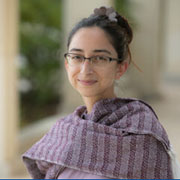Vincent and Rich update the current situation with COVID-19 and SARS-CoV-2, including fatality ratios, virus spreading outside of China, immunity to infection, vaccines, antivirals and much more.
The TWiV team returns this week to SARS-CoV-2019 coverage to review the latest epi curves, the fatality rate, furin cleavage site and receptor binding domain in the spike glycoprotein, related CoV recovered from pangolins, evidence that the virus did not escape from a laboratory, and many more questions sent in by listeners.
Vincent and Rich return to the University of Texas Medical Branch at Galveston to speak with Dennis Bente, Shannan Rossi, Nikos Vasilakis, and Scott Weaver about their work on viruses transmitted by mosquitoes and ticks.
In this week’s coverage of the coronavirus epidemic, the TWiV team discusses the fatality rate, China’s initial reaction to the outbreak, conspiracy theories, how long the virus remains infectious on surfaces, and evidence for virus in the intestinal tract.
The TWiVerers continue their coverage of the new coronavirus outbreak in China, as the number of cases increase dramatically and the virus begins person-to-person transmission in other countries.
Coronavirus expert Ralph Baric joins TWiV to explain the virology and epidemiology of the recent zoonotic outbreak spreading across China and overseas.
Vincent and Rich travel to Galveston National Laboratory to speak with Jim LeDuc, Tom Ksiazek, and Bob Tesch about their long careers as virus hunters.
TWiV provides updates on the new coronavirus causing respiratory disease in China, the current influenza season, and the epidemic of African swine fever, including determination of the three-dimensional structure of the virus particle.
Vincent speaks with virologists at the University of Nevada at Reno about their careers and their work on herpesviruses, arboviruses, and the development of diagnostics for infectious diseases.
Vincent speaks with members of Prometheus, a team of academic and industrial scientists assembled to develop antibody-based therapeutics against infections caused by tick-borne Crimean-Congo hemorrhagic fever virus and rodent-borne hantaviruses, for which no approved vaccines or specific drugs are available.








